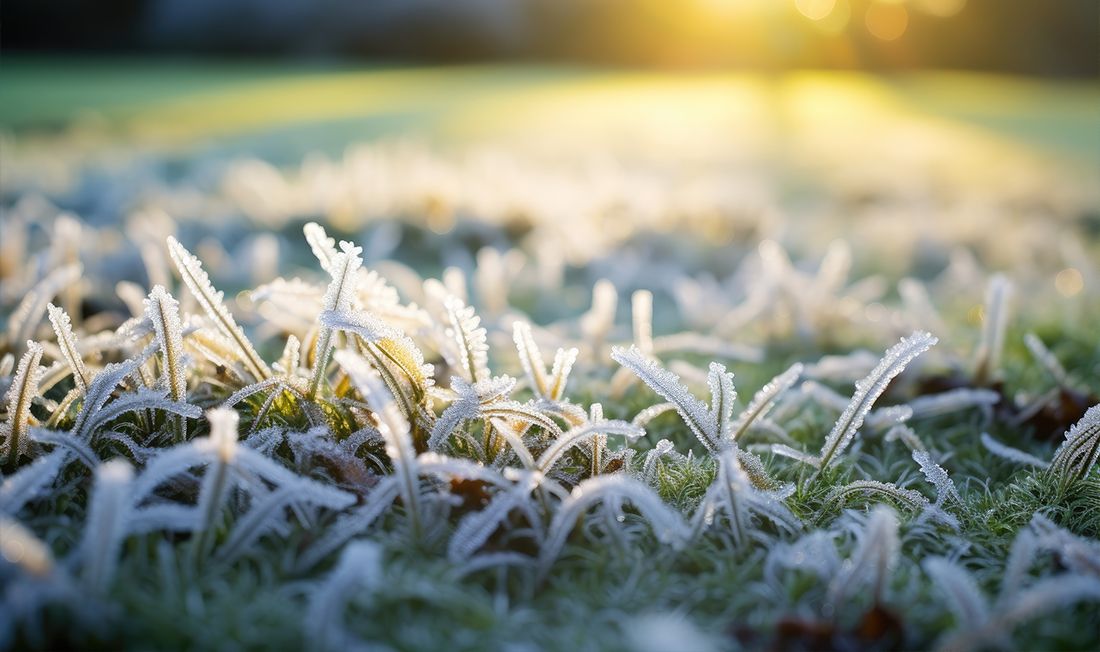The winter time can get boring for us outdoor lovers. The grass is a patchwork of dreary brown and green, the mulch in the landscape beds has faded, and the plants that once had beautiful summer and fall foliage have turned into leafless skeletons and shriveled masses of dead leaves. Fortunately, this lifeless period gives us a great opportunity to get our hands dirty and do some work that would be otherwise difficult when we don’t want to disturb our thriving lawn and gardens. Here are some projects that can keep you busy around your yard this winter.
What Can be Done in my Yard in Winter?
Improve or Install Drainage
Lawns often suffer in areas that tend to collect and hold water. Excess soil and leaf moisture can be a catalyst for root and foliar diseases, poor nutrient uptake, and runoff of fertilizers and pesticides. If you have chronically wet areas in the lawn, the winter is a great time to install drainage so that you can ensure a dry, healthy lawn in the spring. First, identify the source of the water.
If it’s coming from a source that can be fixed, like a leaky pipe, no drainage is necessary. If the source can’t be fixed, consider options like a french drain that will allow water to flow and disperse into the soil. If the area around your downspouts frequently collects water, install pop-up drains to allow rainwater to flow in sloped areas of the lawn, and perhaps a channel drain may work where runoff from paved areas gathers in the lawn. There are a variety of drainage options for different issues.

Build Garden Beds
There’s nothing like walking out into your yard in the spring and picking fresh tomatoes to make spaghetti sauce or mint for a refreshing mojito. Making garden beds can be as simple or as complex as you’d like. Either way it’s a great project to work on in the garage in the winter time before assembling outside.
After you’ve built your garden beds, stake out the area that they’ll be placed in and lay down landscape fabric or staple landscape fabric to the bottom of the beds. This will provide a weed barrier to prevent weeds from growing up through your soil (though, it’s inevitable that they’ll get in there eventually). Finally, fill up your beds with potting soil. If you have a large volume to fill, you may consider buying topsoil by the truck load and mixing in compost at a 1:1 ratio of topsoil to compost.

Prune Shrubs and Woody Plants
Winter is the best time to prune your trees and woody shrubs. If the target plants have leaves that drop off, then winter is an ideal time because you can easily see the branching structure. More importantly, your plants are dormant during the winter, meaning that you will not harm the plant by pruning areas that are actively growing or leaving open wounds that are susceptible to disease or insects.
There are several reasons for pruning, including maintaining the size and shape, removing dead and diseased parts, to encourage new growth, and to improve fruiting and flowering. It’s essential for maintaining the health of many plants.

Put Down Weed Barriers
If you like weeding your garden and flower beds, you can skip to the next section. Assuming most of you are still reading, install weed barriers in your flower beds this winter so that you don’t regret it in the spring! A weed barrier is a layer of fabric that lies between your mulch and your soil to prevent weeds from invading your beds. It may seem like a tall task to remove all of the existing mulch, install the barrier, and re-mulch, but it will be well worth-it. Be sure to provide significant overlap so that gaps don’t give way to areas where weeds could eventually grow.

Install Drip Irrigation
Before you lay your new mulch on top of your new weed barrier, consider installing some drip irrigation first. Drip irrigation is a convenient way to provide water directly to the roots in your beds. By applying low pressure water through emitters instead of relying on sprinkler irrigation, you can avoid excessive water use, wet foliage that can lead to fungal diseases, and potential calcium buildup on foliage from irrigation water.

Air Spade
An air spade is a tool that applies a high pressure blast of air into the ground to reduce compaction around tree roots and in flower beds. Picture a power-washer, but with air instead of water. This high powered jet of air blasts a hole several feet into the ground, and the air permeates and breaks compacted soil layers that can inhibit root growth, and nutrient and water uptake. Fill the holes with a bit of compost and fertilizer to feed the roots as they expand into their newly loosened soil. Though this is a project that you can do in the winter, don’t try it if the ground is frozen!










1 comment
I already have fungus in my yard so what can i use in a hose end sprayer to attack it?